Chaumet pays homage to the pansy
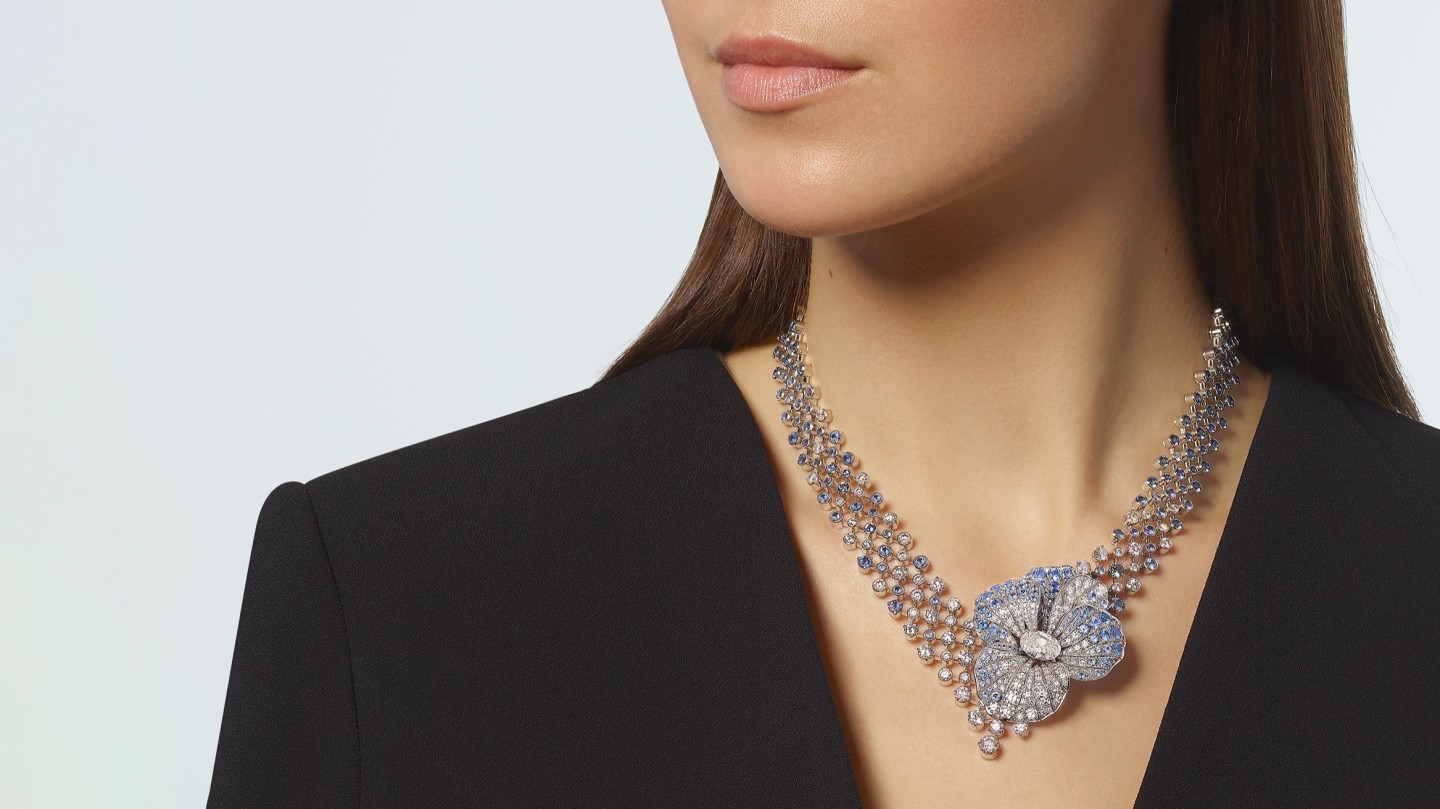
Roula Khalaf, Editor of the FT, selects her favourite stories in this weekly newsletter.
In floriography – the language and symbolism of flowers – the pansy has long represented love. In A Midsummer Night’s Dream, Oberon and Puck use wild pansy to make Demetrius fall in love; in Roman mythology, Cupid struck the flower with an arrow, transforming it into an amorous potion. The flower denotes remembrance too, its name derived from the French word for thought, pensée.
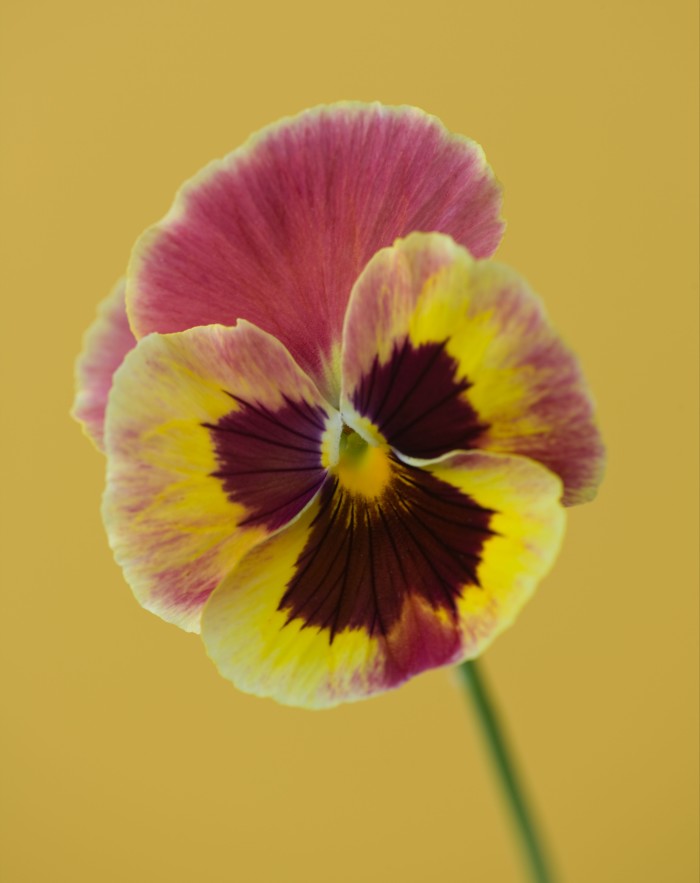
During the first half of the 19th century the flower – part of the Viola genus – enjoyed a burst of popularity when breeder William Thomson created hybrids by crossing three flowers and creating sweet tricolour “faces”, with hundreds of new varieties that, despite their delicate beauty, bloom right through winter and spring.
“It’s a flower that looks so fragile, but it survives the snow and the sun,” says Jean-Marc Mansvelt, CEO of Chaumet. “This fragility is a strong messenger. It’s really very emotional.” The flower is central to the maison’s forthcoming high-jewellery collection Le Jardin Chaumet, which takes plants from hedgerows, woodland and fields and transforms them into 68 bravura jewels, including 12 one-off pieces dedicated solely to the pansy.
Rings in white gold are set with a single fancy vivid-yellow diamond or with round pink and Padparadscha sapphires and diamonds. Each piece evokes the ruffles of the pansy’s petals or its distinct dégradé colours – played out in Chaumet’s collection with intricate pavé settings and delicately toned stones.
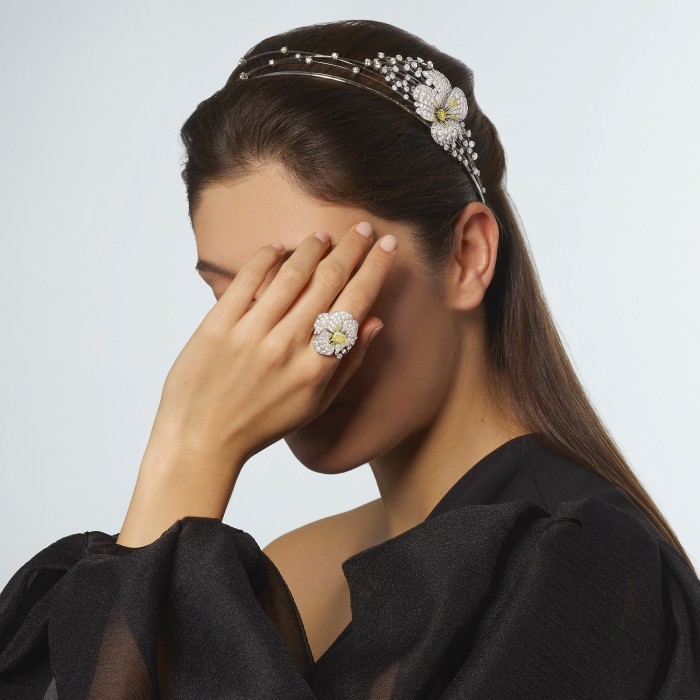
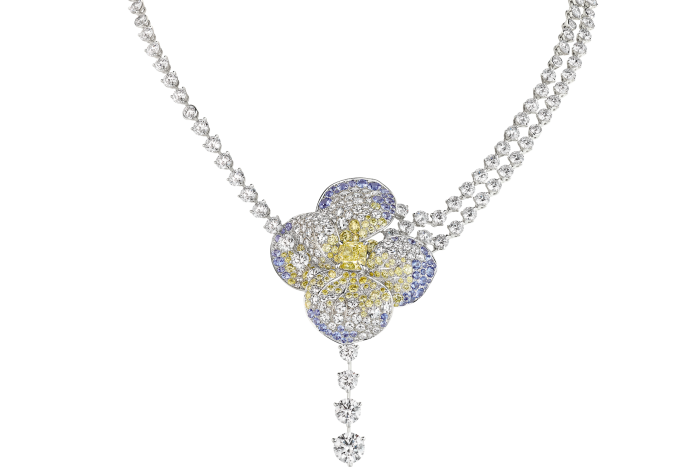
White-gold, white- and yellow-diamond and sapphire Pensée necklace, POA
A mesh of white gold with diamonds and sapphires becomes a dazzling necklace punctuated by an exquisite pansy set with a 2.5-carat oval-cut diamond. Similarly fine latticework spills from rings and earrings, or is used with diamonds and sapphires as a cover for a “secret jewellery” timepiece that slides to reveal a mother-of-pearl face.
The virtuoso constructions that almost allow stones to float are a signature of the house, but creative director Ehssan Moazen stretches these structures beyond naturalistic flowers to give a sharper, more contemporary feeling. “It’s as though they are moving, evolving and growing,” he says.
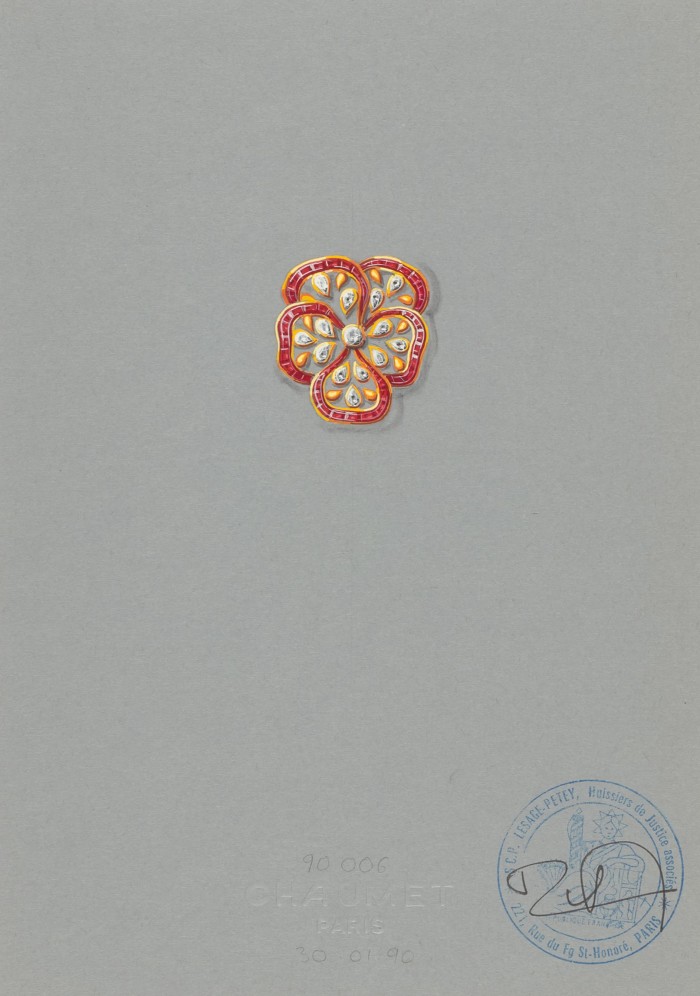
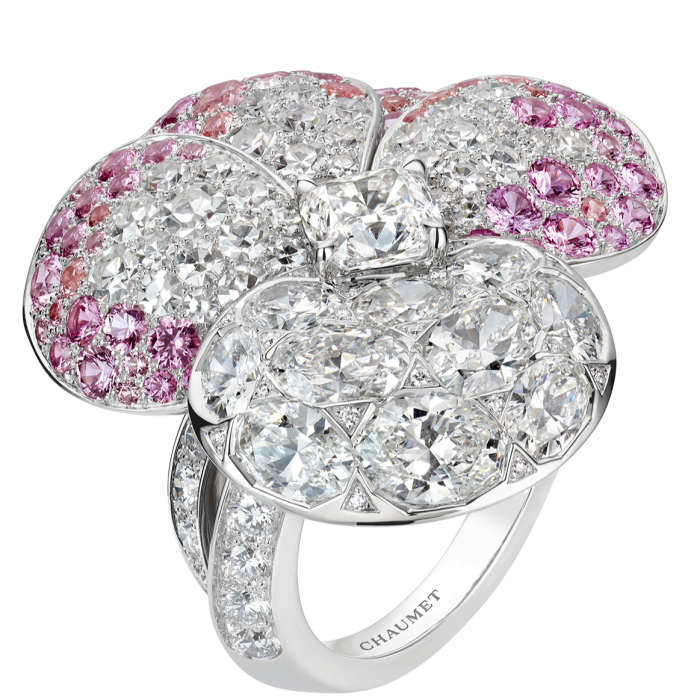
Chaumet white-gold, diamond, pink- and Padparadscha-sapphire Pensée ring, POA
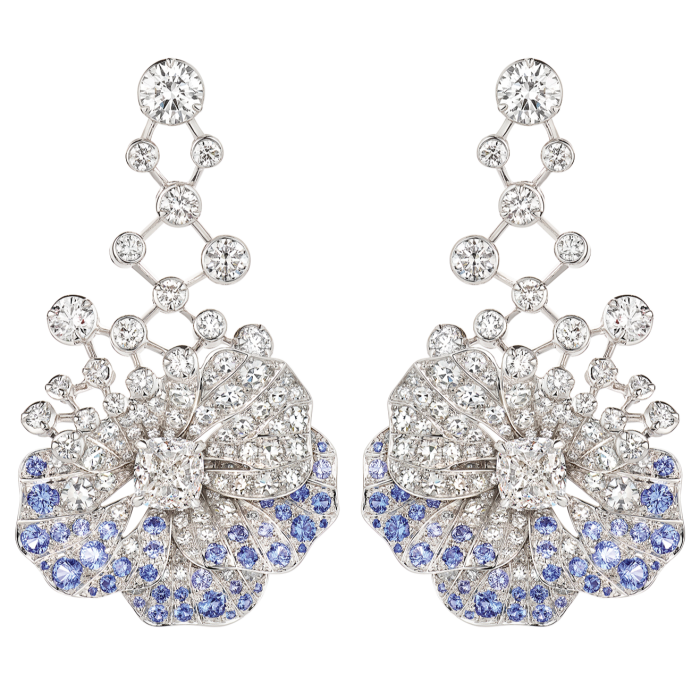
White-gold, diamond and sapphire pensée earrings, POA
Chaumet’s relationship with botany extends back to the 18th century. Founder Marie-Étienne Nitot was a noted “naturalist jeweller” who observed flowers with a scientific level of detail. This interest in capturing nature as it really was, flaws and all, meant that all plants were fair game and, adds Mansvelt, there was always an interest in species that were not only beautiful but also symbolic. “This has been deeply rooted in the story of Chaumet, particularly since the first empire” when Nitot was jeweller to both Napoleon and Joséphine Bonaparte.
Chaumet’s rise echoes the 19th-century fervour for flowers, both domestic species and those gathered from around the globe. In Paris, that obsession reached epic proportions at Malmaison – the country home of Joséphine – who transformed the property into one of Europe’s most extraordinary botanical collections, eventually spanning 1,794 acres.
The botanical pieces from the past – especially the 19th century – continue to inspire; the Pensée collection is rooted in an extraordinary pansy tiara created during the 1850s by Jean-Baptiste Fossin, who succeeded Nitot and his son after the exile of Napoleon in 1815. The exuberant and voluminous flowers set with diamonds in silver, typical of the romantic period, seem suspended in the most ethereal framework that allows light to go through the stones. Each of the charming, characterful pansies was designed to be removed so that they could be worn as a brooch or hair ornament – another signature of Chaumet. In the new collection, a transformable tiara in white gold with a single pansy riffs on this idea, transforming into a more pared-back white-gold band set with a sprinkling of diamonds.
“You really feel like these pansies just came out of the garden,” says Mansvelt. “And a flower will die but jewellery is eternal. It stays forever.”
Comments